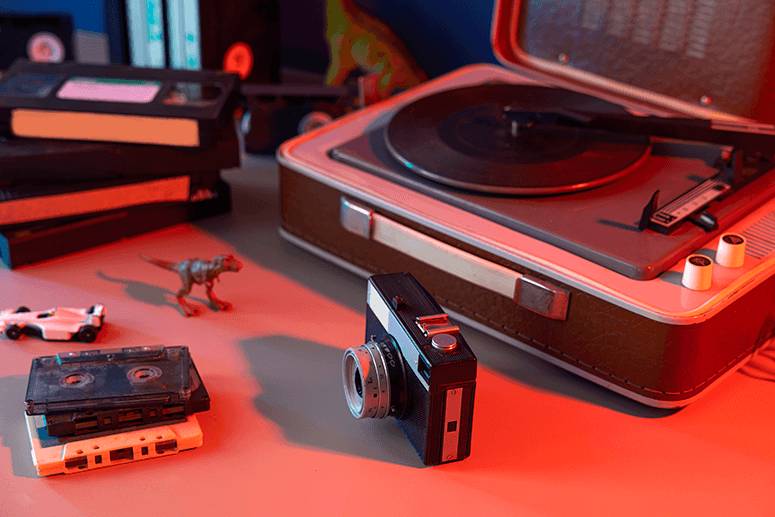Long live physical media
In an age where streaming movies, shows, and music has become second nature, we’re slowly forgetting the joy of physical media. Nothing beats the hours spent admiring the DVD cover of a movie you just fell in love with, exploring the bonus features included on the second disc, or flipping through a worn-out CD booklet while singing your heart out as you read the lyrics. But more than that, there’s beauty in growing a collection of art for your consumption and convenience.
Growing up, my dad’s collection of VCDs, and later on DVDs, was my gateway into discovering movies I’d never heard of—or at least movies my younger self wouldn’t have bothered to check out. These tangible formats offered a sense of discovery as you explored the cover art. On the other hand, before listening to music was as easy as counting 1-2-3, I was immersed in the culture of owning and listening to CDs. My mom and dad would blast the music of their time, with artists such as Madonna, Carpenters, and Whitney Houston standing out, even though I didn’t enjoy listening to them back then.

I started asking them to buy CDs of my own. Soundtracks from Camp Rock and the High School Musical trilogy, Taylor Swift’s first three albums, and Kris Allen’s debut album marked the beginning of my humble CD collection.
Celebrating physical media is a reminder that art won’t disappear with a broken link or a discontinued streaming platform.
Some few years later, as the means of access continued to evolve, the internet suddenly paved the way for accessible art consumption. Around my prepubescence, I indulged myself in the world of the internet. Suddenly, my world became bigger as I found myself exploring more art that cyberspace has to offer. Now in my teens, piracy came into the picture. Before Spotify and music streaming platforms, YouTube to MP3 converters were our best friends. I remember spending hours downloading songs of my favorite artists and popular songs dominating the radio charts at the time.

As I grew older, consuming art became an escape. I was introduced to purchasing pirated copies of movies and TV episodes. After school, before going home, I would drop by my family’s drugstore. Just a couple of steps away was a vendor in a corner selling pirated movies. I would glance through the plastic sleeves and thin cardboard that served as the “cases.” Without access to cable or a high-speed internet connection, I settled for the practical route and bought collections of random WWE RAW episodes, as well as the latest movies released a couple of months earlier, when the video quality was relatively better and without those cinema-goers standing in the way.
Whichever way you look at it, piracy plays a significant role in local cinema. In a country where access to media can be quite challenging, piracy offers a unique film culture, allowing audiences to discover both local and international movies that may not have made it to theaters. Most cinephiles today have started their journey somewhere, and it’s often through piracy. However, on the other side of the spectrum, piracy raises significant implications and concerns for the local film industry at large. While it provides more access and grows the audience, it is the filmmakers and distributors who suffer, as they depend on box office sales. This is an entirely different discussion for another time.

When streaming became king, art had never been more accessible. Although Spotify has been my primary source for music consumption, collecting CDs in my early twenties felt like healing my inner child. While I didn’t care much about carefully flipping through the booklets or the disc itself back then, I would later come to value the importance of maintaining them in good condition, especially now that I’ve grown my CD collection with albums I bought with my own money. It felt like reuniting with a past love, collecting the albums of my favorite artists—5 Seconds of Summer, Harry Styles, and The 1975—who were once part of my daily rotation on Spotify, now manifesting in their physical forms.
I was out of the collecting scene during Astroplus and Odyssey’s dying days. As physical media slowly started to decline, so did movie and music stores. The magic of entering and leaving a store with a CD in hand has become a thing of the past, which, in my experience, I have taken for granted.
There’s no doubt that streaming movies and music is far cheaper than owning every movie you watch and every song you listen to. In this climate, physical media may seem like an unnecessary expense. However, not everyone realizes that much of the content made for streaming never receives a physical release. The fact that even large companies place little importance on physical media is quite alarming.
This digital impermanence has never been made more clearer than the Internet Archive, a nonprofit digital library boasting a wide array of books, movies, music, software, and more in its collection, was brought down by a cyber attack late last year. The site is notable for hosting the Wayback Machine, which allows users to view archived versions of web pages from the past. When the news broke that the site was down, it served as a stark reminder that nothing online lasts forever. Even archived material can be fickle—fleeting moments that may vanish without warning.
Celebrating physical media is more than just owning something tangible; it’s a reminder of art that won’t disappear with a broken link or a discontinued streaming platform. When it comes to movies worth celebrating, restoring, and saving, the Criterion Collection is a treasure trove for cinephiles alike. Supplementary materials, such as behind-the-scenes documentaries, filmmaker commentaries, and astonishing cover art enhance the experience of owning a piece of cinematic history.
At the end of the day, physical media is a testament to our existence and a reflection of life through art. Living in a post-pandemic world, where we have come to realize that everything is temporary, physical media offers a sense of permanence—a reminder that art, no matter how “great” or “bad” it may be, can outlive us all.



